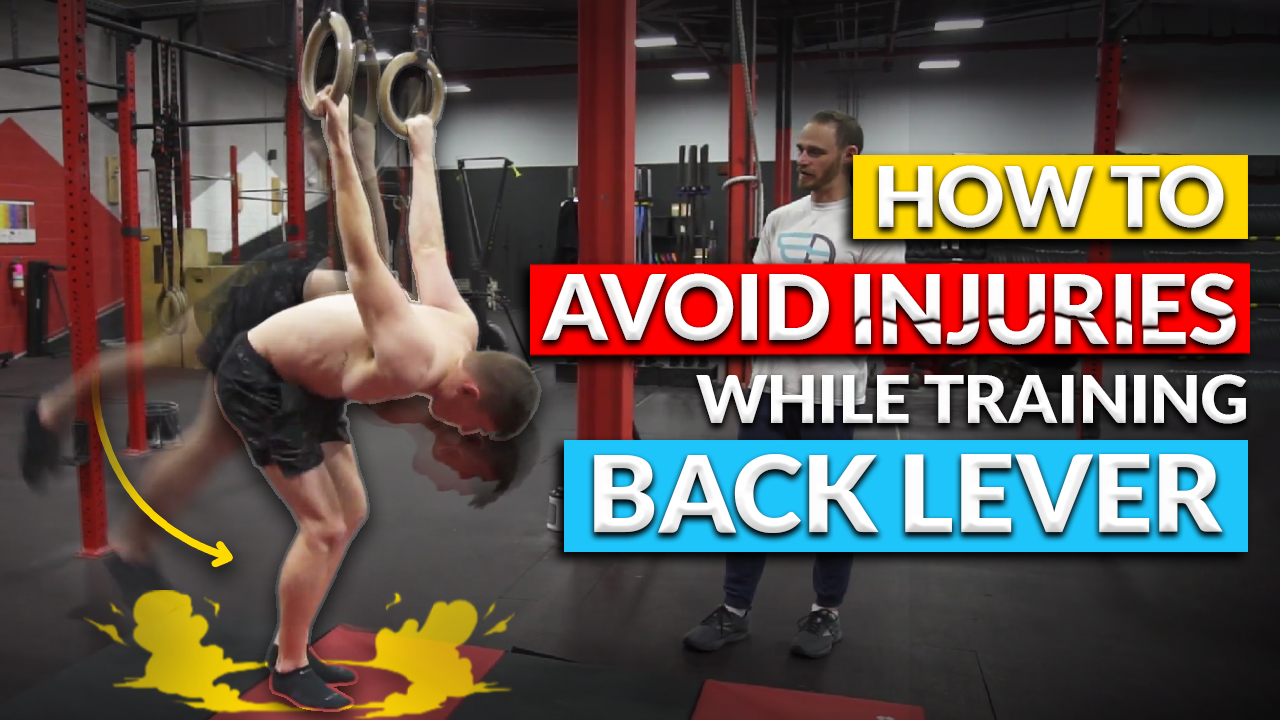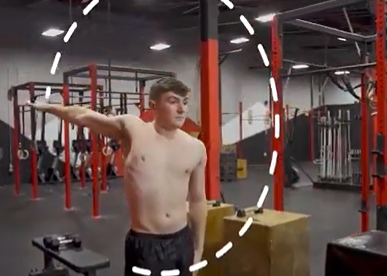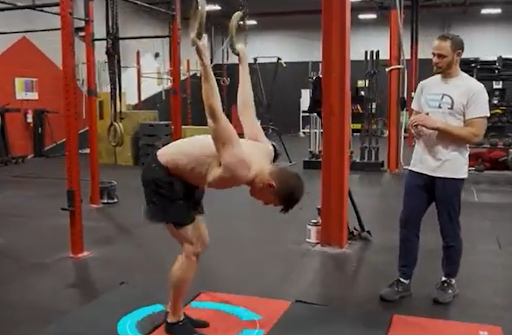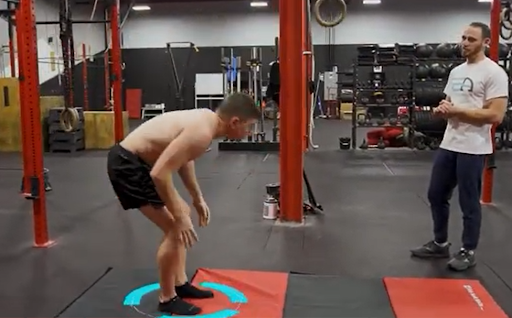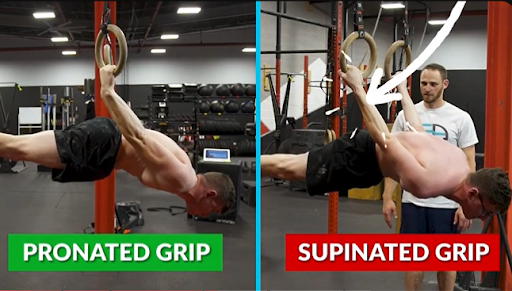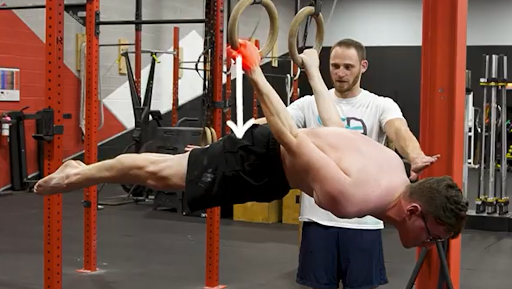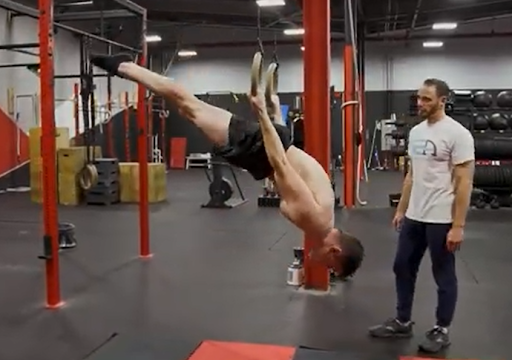Have you ever been fascinated by the challenging back lever exercise but wondered how to do it safely without getting hurt?
The back lever, a stunning display of strength and control, is a fundamental calisthenics skill.
However, as exhilarating as it looks, mastering the back lever requires not only practice and dedication but also a cautious approach to prevent injuries.
In this article, you will learn valuable insights that will guide you in navigating this challenging skill while minimizing the risk of injury.
🔥Back Lever Overview
The back lever is a formidable calisthenics maneuver, demanding a high level of upper body strength and control. This exercise involves hanging horizontally from a bar or gymnastic ring to hang parallel to the ground.
The arms are fully extended, and the body remains straight, engaging the shoulders, back, and core muscles to support the entire body weight.
Achieving the back lever requires a gradual progression from simpler exercises to building the necessary strength and flexibility in the shoulders and back. Beginners often start with foundational movements such as skin the cat or tuck back the lever before advancing to the full back lever position.
Proper form is vital to reduce the risk of injury, and a comprehensive warm-up is essential to prepare the body for this demanding exercise. Check out this video on how to perform a perfect back lever.
✨5 Proven Tips to Avoid Back Lever Injuries
Mastering the back lever demands strength and a mindful approach to avoid injuries. Let’s explore five proven tips to navigate the back lever safely.
1. 🔥Proper Warm-Up
Begin your training with a comprehensive warm-up routine. It is essential to prepare your body adequately before attempting the back lever. Cold muscles are more prone to injury, so invest time in dynamic stretches, joint rotations, and exercises targeting the shoulders and arms. The Movement Athlete offers a detailed warm-up video that guides you through the essential steps.
Here are some YouTube videos to help you warm up properly for the back lever:
- 📍The Best Workout for a Strong and Safer Back Lever Training (Part 1)
- 📍The Best Workout Exercise for a Strong and Safer Back Lever Training (Part 2)
- 📍How to Fix Your Back Lever Mobility in 10 Minutes
2. 🔥Know How to Bail Back Lever Safely
Having an exit strategy is crucial when training the back lever. There are two safe exits that you can take. Each caters to different scenarios, especially when rings are at varying heights. Knowing how to distribute weight off your arms immediately can prevent potential shoulder injuries.
-
First Exit Strategy: Controlled Weight Reduction
The first exit strategy is a controlled method of stopping the back lever movement by swiftly reducing weight. This technique allows you to place your feet down, which is primarily effective when the rings are positioned at a lower level, providing a quick means to lessen the load.
-
Second Exit Method: Dismounting Technique
The second exit method is akin to a dismount, where you can release the rings, allowing yourself to fall and land on your feet. This method is more suitable for scenarios where the rings are positioned higher, providing an alternative technique for safely exiting the back lever position.
Whether it’s lowering yourself down gently or dismounting by releasing the rings, having an escape plan is pivotal.
3. 🔥Consider Pronated Grip Over Supinated Grip
The grip you choose can significantly impact the stress on your elbows. Opting for a pronated grip, with palms facing forward, can alleviate stress on the elbows compared to the supinated grip.
This grip is considered less taxing on the arms, especially if the elbows are not accustomed to the demanding stress exerted during the back lever exercise.
Adjusting grip choice is an effective way to safeguard against potential injuries, ensuring a safer and more sustainable back lever practice.
4. 🔥Lower Down Slowly
The pace at which you lower yourself during the back lever holds immense importance. Rapid movements or sudden stops at the end of the range of motion can place excessive stress on your shoulders, potentially leading to injury.
You can initiate the movement from the inverted hang slowly and consciously engage your muscles throughout the entire motion. Lower slowly and maintain control throughout the movement.
This method not only minimizes the risk of injury but also allows you to gauge the appropriate level of the lever you should be training.
5. 🔥Strengthen Your Biceps
The biceps play a crucial role in supporting the stress of the back lever. Strengthening these muscles can effectively counteract the strain, reducing the likelihood of injury.
Exercises such as bicep curls and slow negatives, like those performed in rope climbs, are recommended to fortify the biceps and prepare them for the demands of the back lever.
If you want to build bigger and stronger biceps, our article, A Calisthenics Bicep Workout Blasts Your Biceps Without Weights can help.
The significance of these five tips lies in their collective contribution to injury prevention when mastering the back lever. By warming up, mastering safe exits, adjusting your grip, controlling your descent, and strengthening your biceps, you can reduce the risk of injury while practicing this demanding calisthenics skill.
🧐Frequently Asked Questions
🔎What muscles does the back lever work?
The back lever primarily engages the shoulders, back, and core muscles. It demands significant upper body strength and stability to maintain the horizontal body position.
🔎How can I progress towards achieving a back lever?
Beginners can start with foundational exercises like skin the cat, tuck back lever, and advanced tuck back lever to build the necessary strength and flexibility. Progressing gradually through these stages is key to mastering the back lever.
🔎How long does it take to learn the back lever?
The time required varies for each individual based on their starting fitness level and consistent training. It may take several months to years to achieve a full back lever, depending on one’s progression and dedication.
🔎Are there any prerequisites before attempting the back lever?
It’s recommended to have a solid foundation in upper body and core strength. A comprehensive warm-up and familiarity with related exercises that work on shoulder and back mobility are beneficial.
🔎How do I prevent injuries while practicing the back lever?
Ensuring proper form, using safe exit strategies, controlling descent speed, and understanding grip variations are essential in preventing injuries. A gradual progression through stages and a mindful approach to technique reduce the risk of harm.
💥Conclusion
As you journey through your back lever training, remember that patience, consistency, and safety should be your guiding principles. Mastery of this impressive skill comes not only from practice but also from a mindful and injury-conscious approach.
Remember, the path to mastering calisthenics lies in dedication, proper technique, and injury prevention. Whether you’re a novice or an experienced practitioner, these tips will help you enjoy the journey safely.
Feeling ready to start your calisthenics journey and conquer the back lever, but not sure where to begin? Try The Movement Athlete’s Free Assessment and get a personalized training program to kickstart your path to success.
The Movement Athlete offers the most comprehensive calisthenics training program. You can gain exclusive access to a comprehensive program featuring in-depth tutorials, customized progressions, and tailored workouts designed to elevate your fitness journey.

